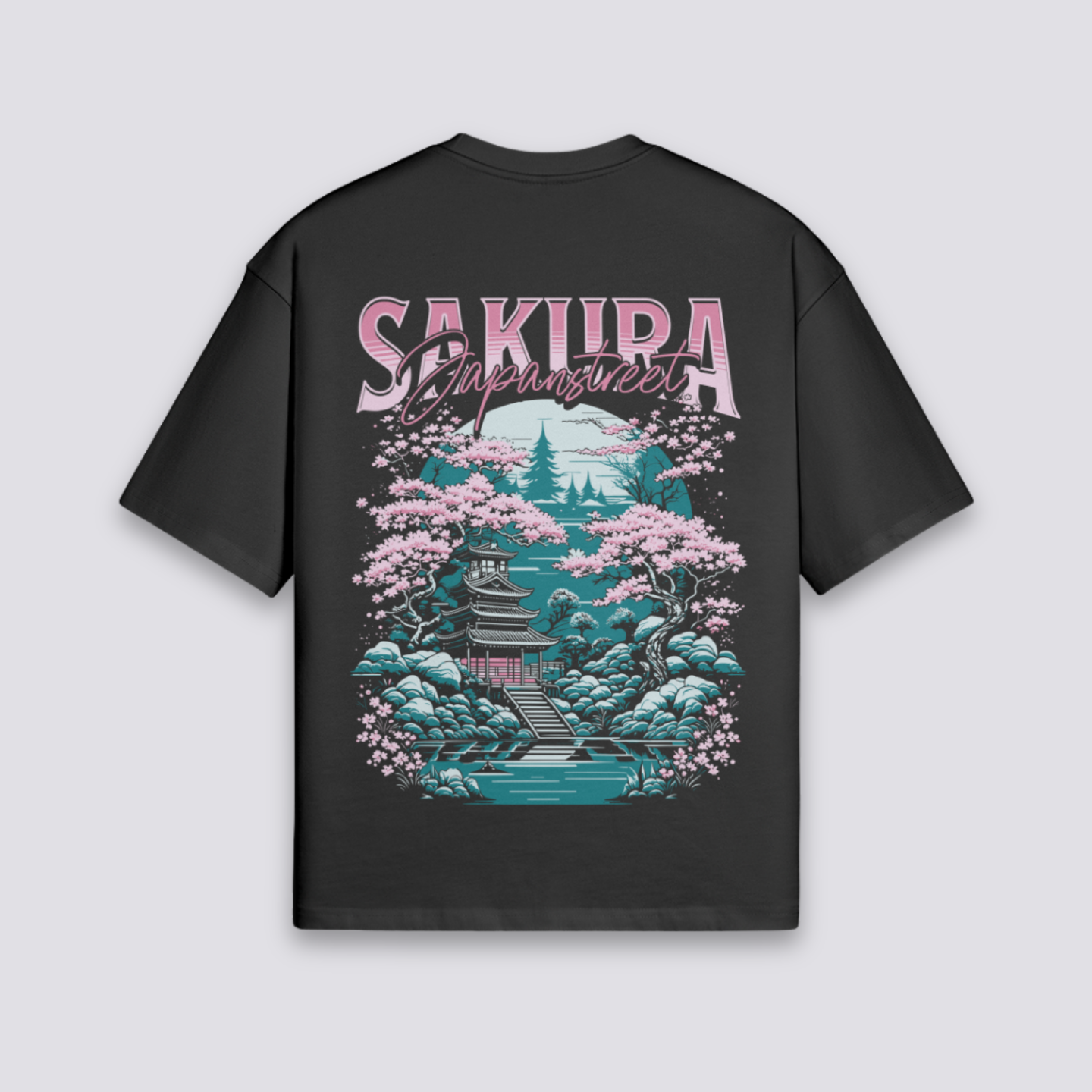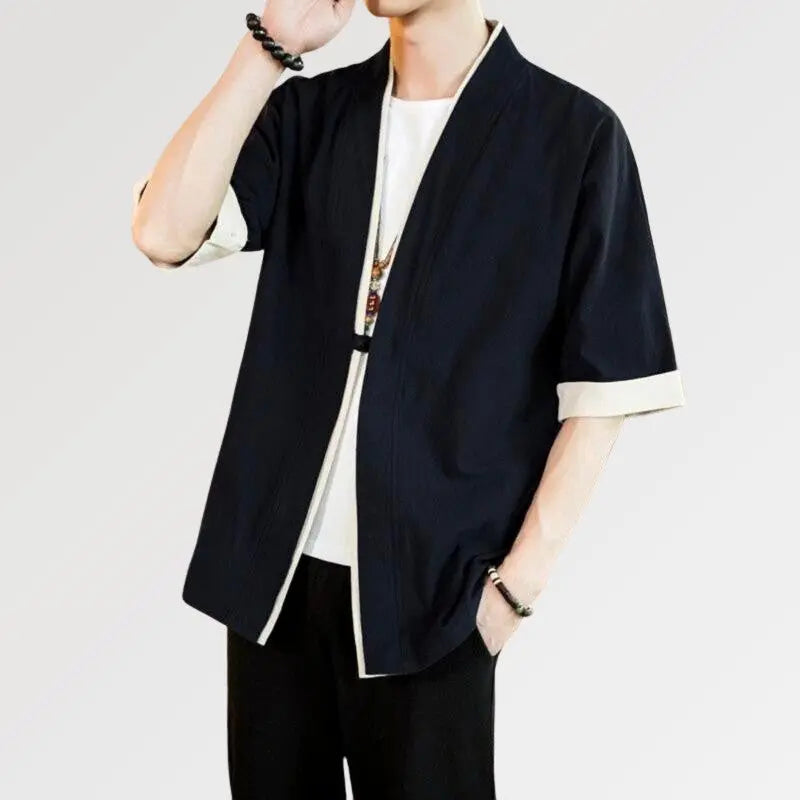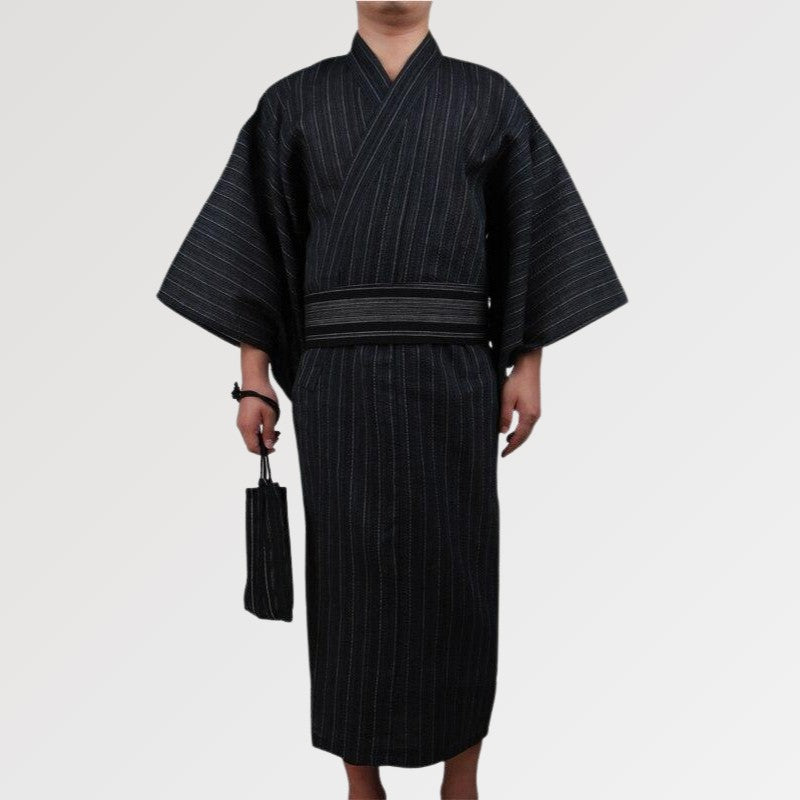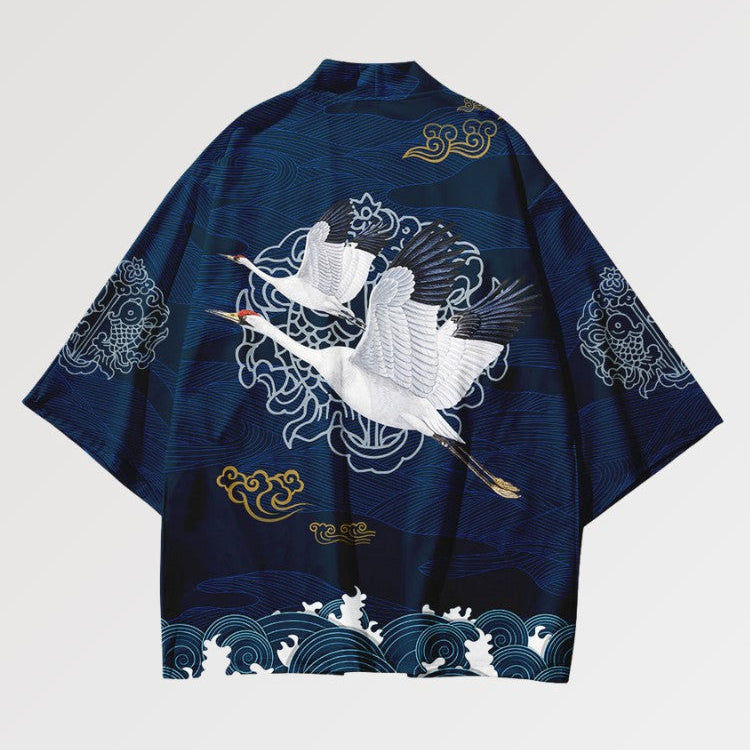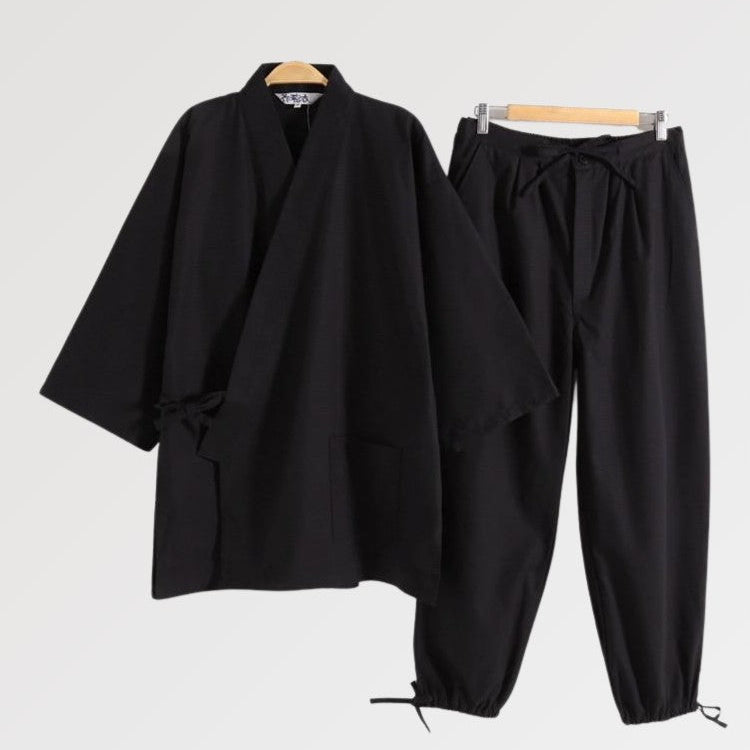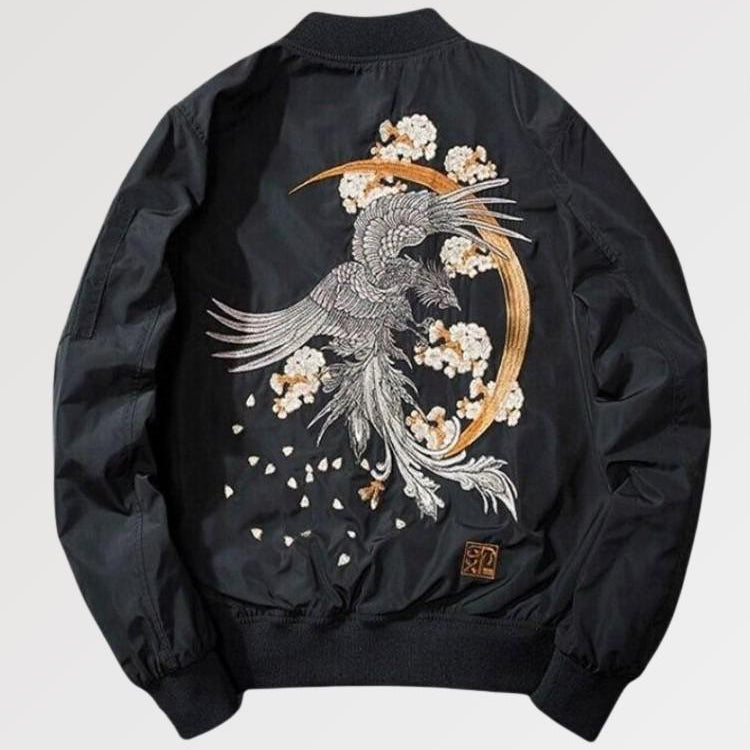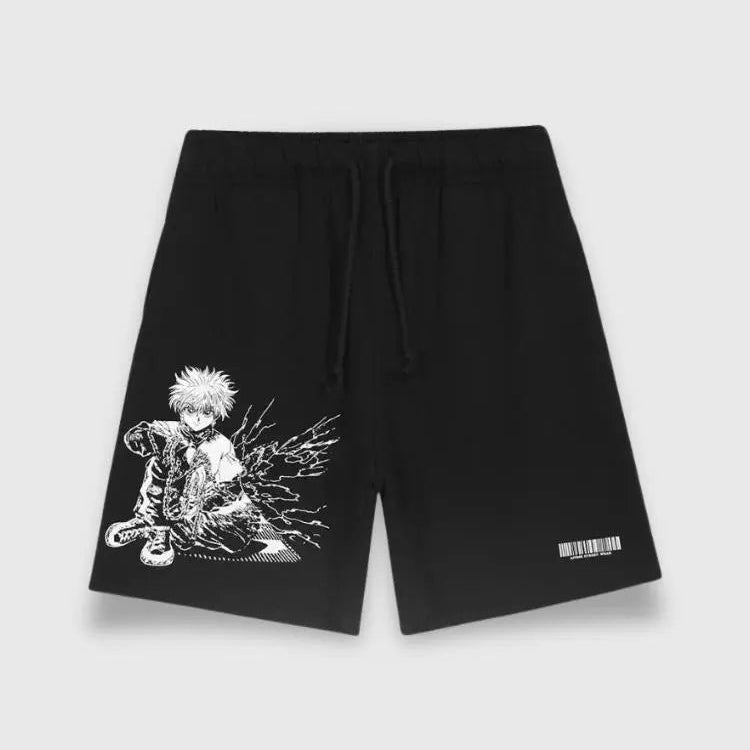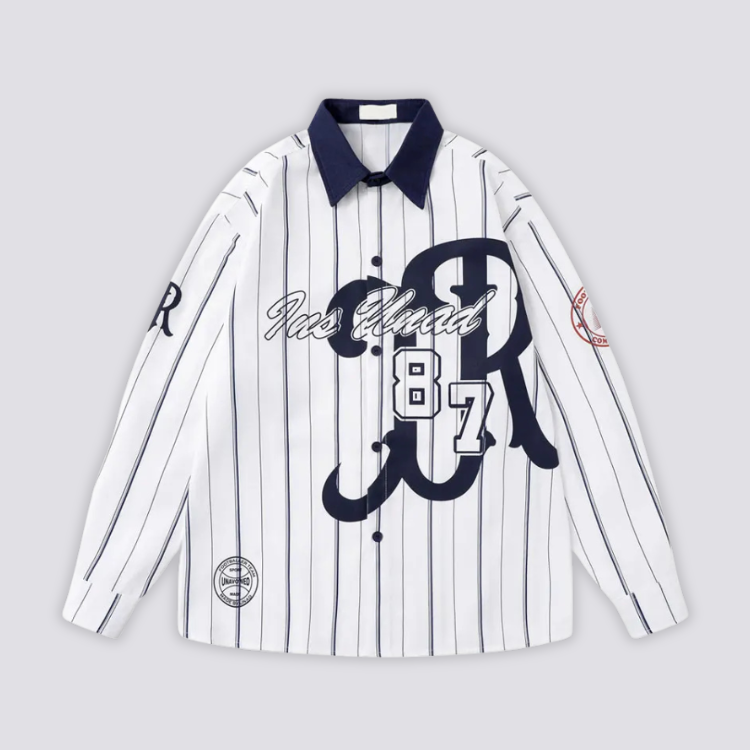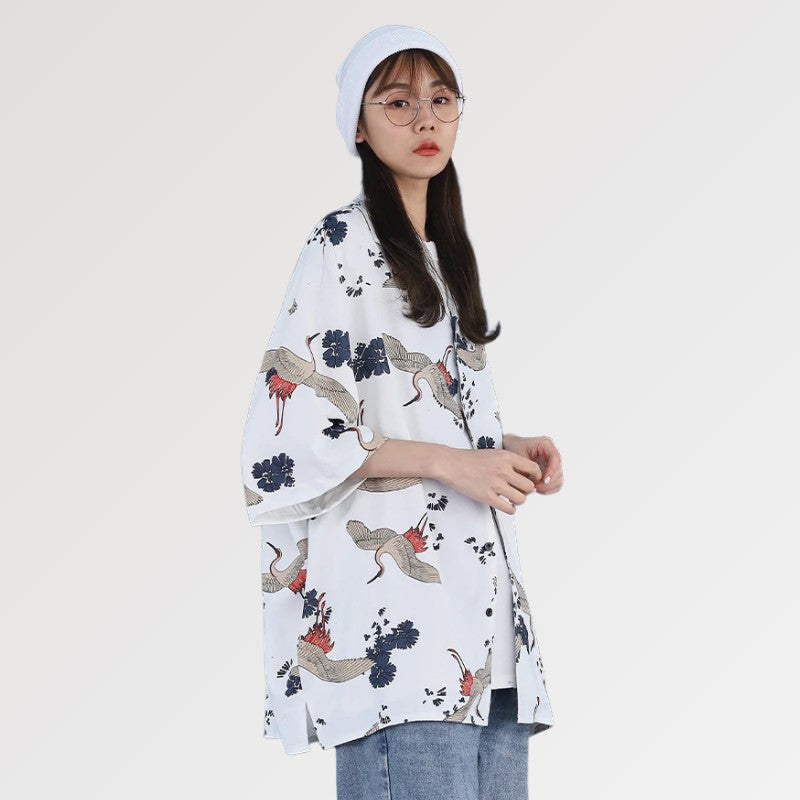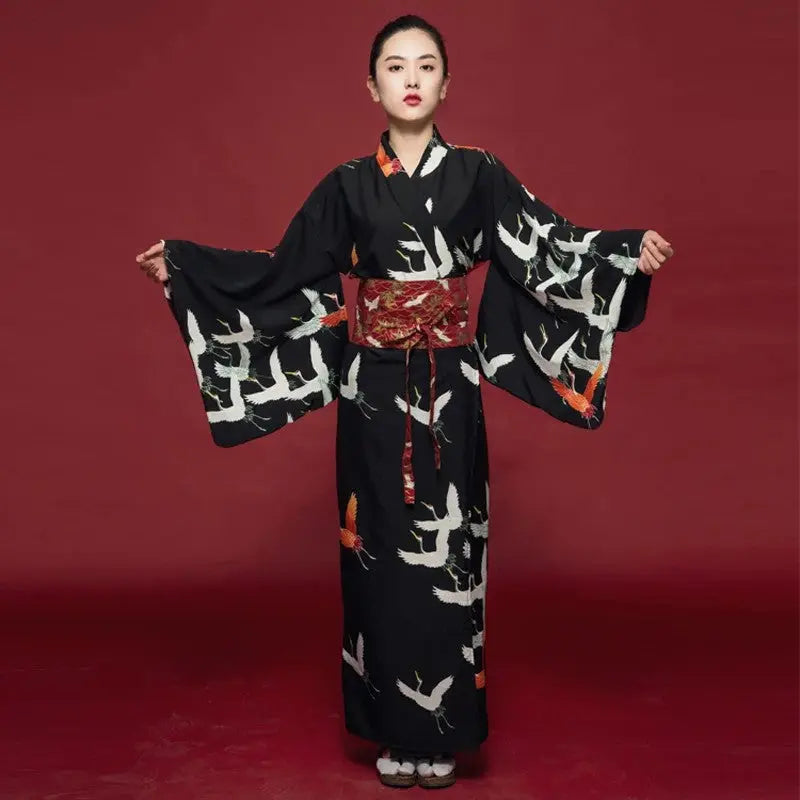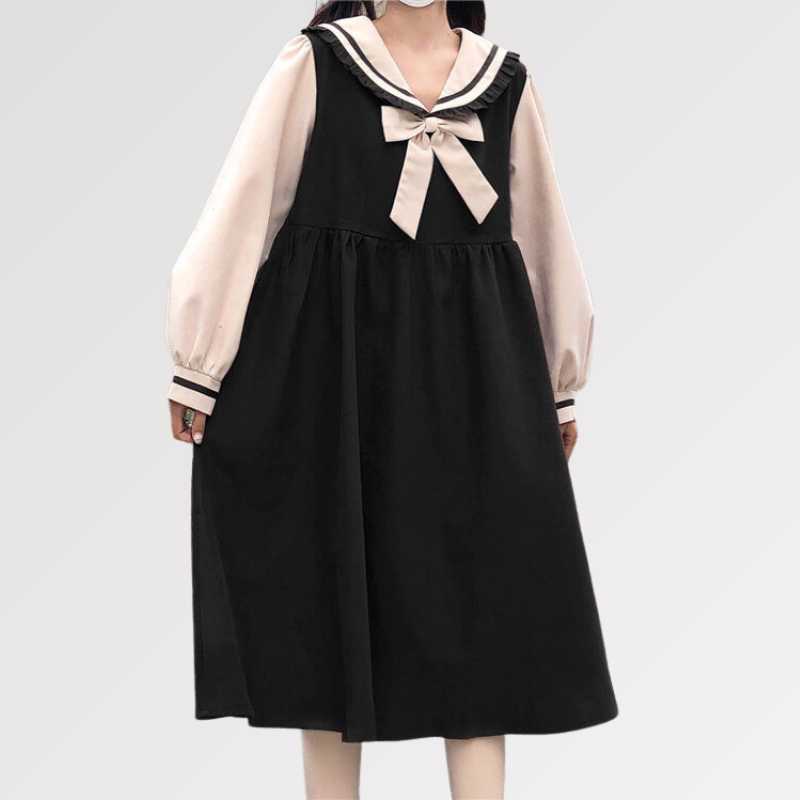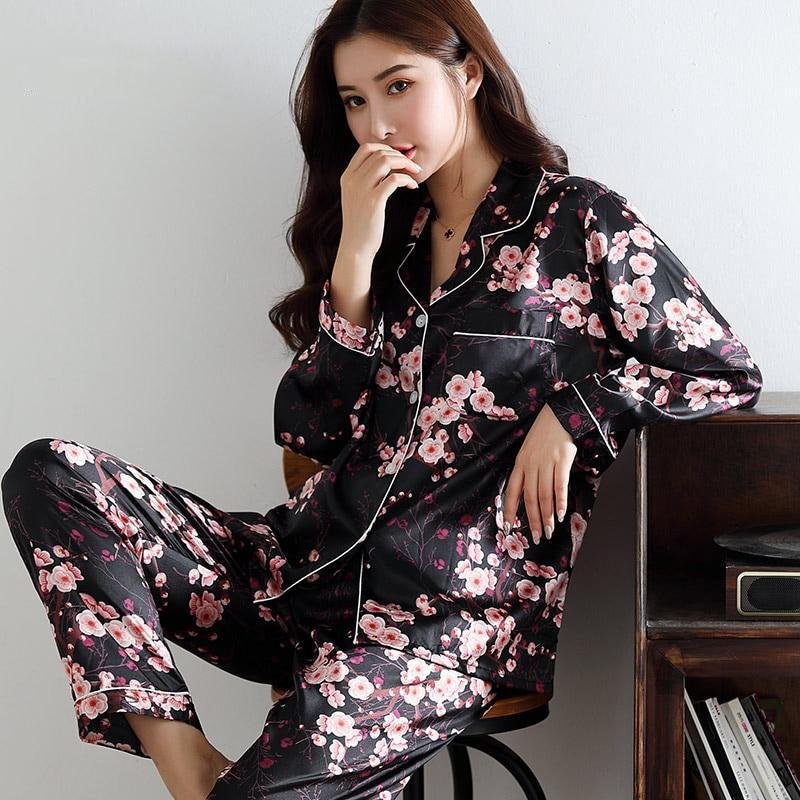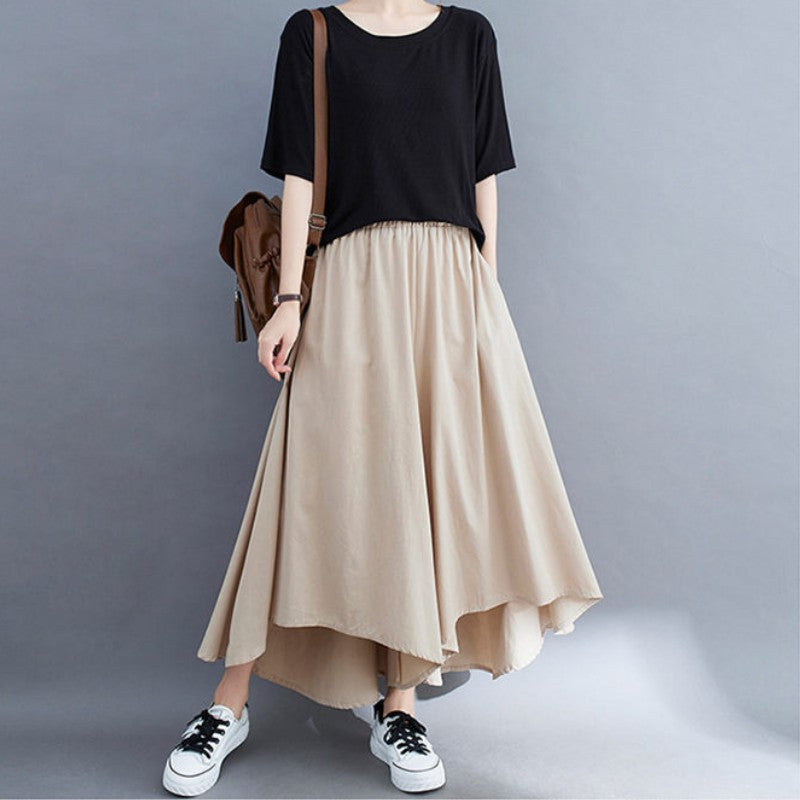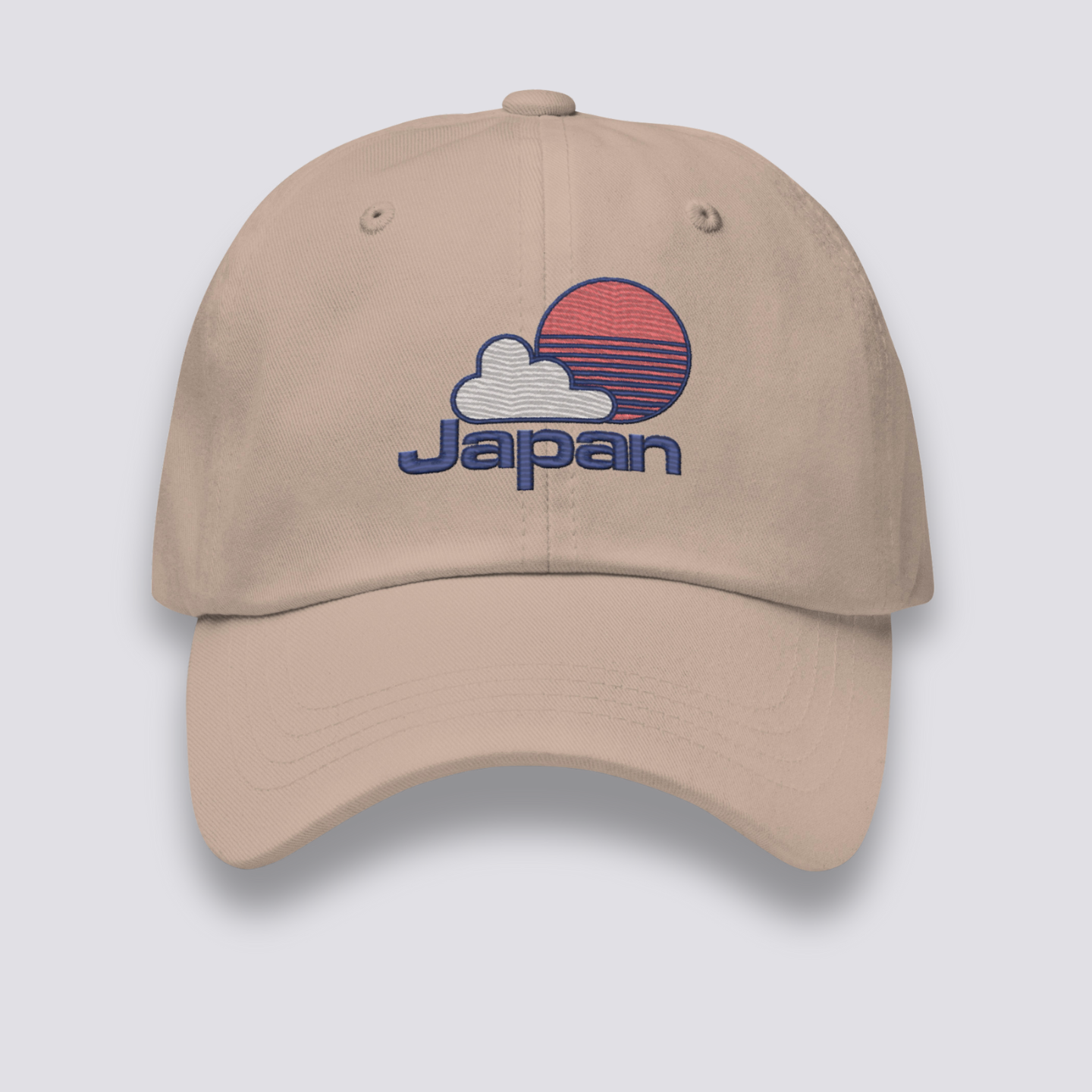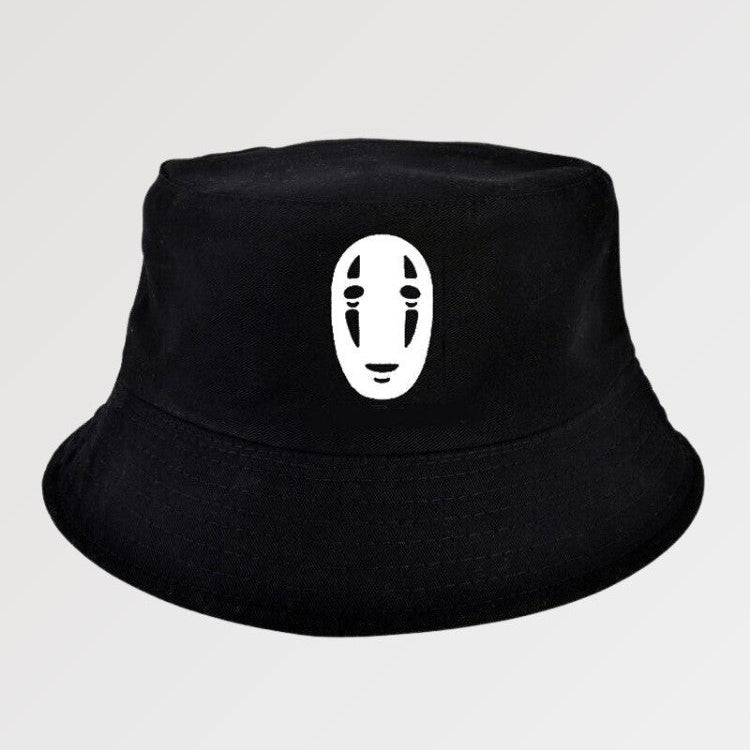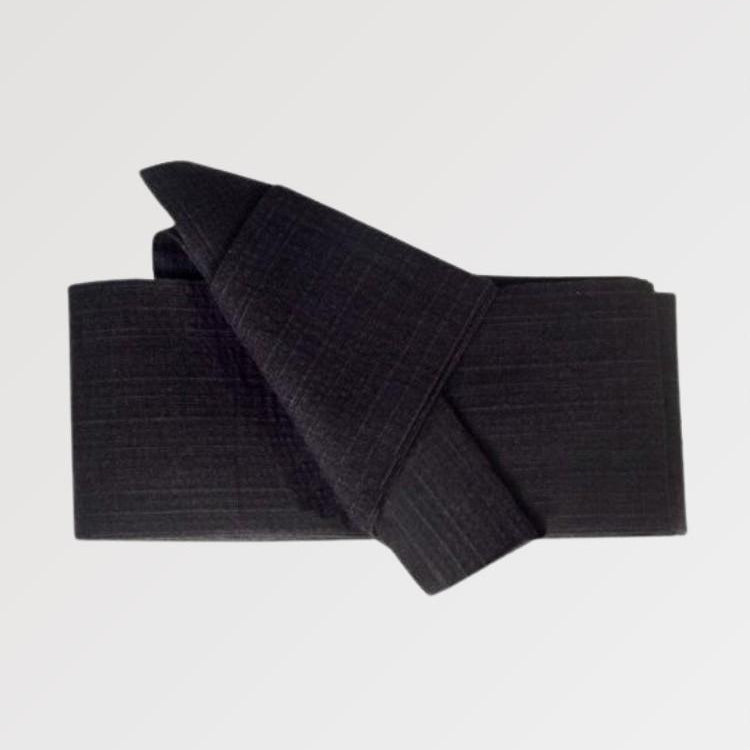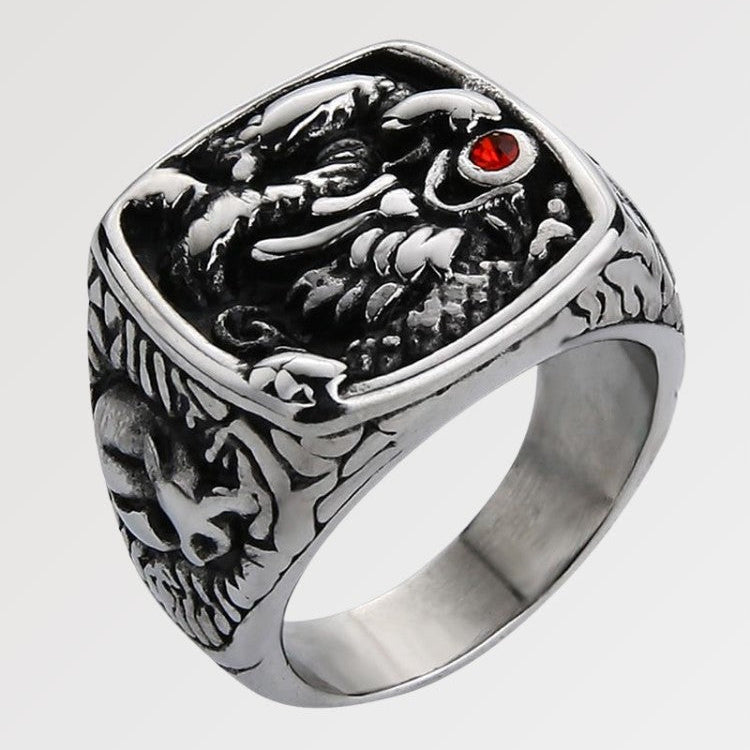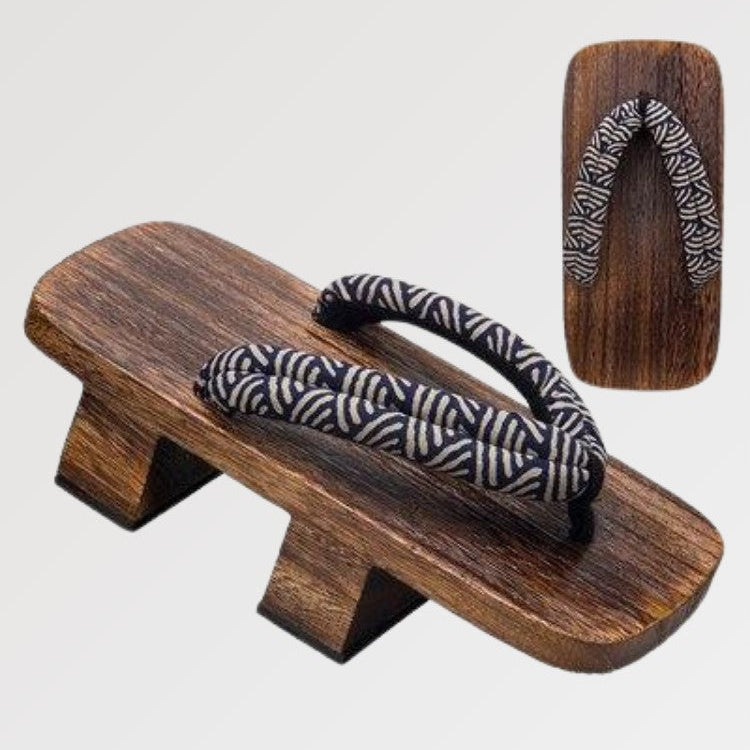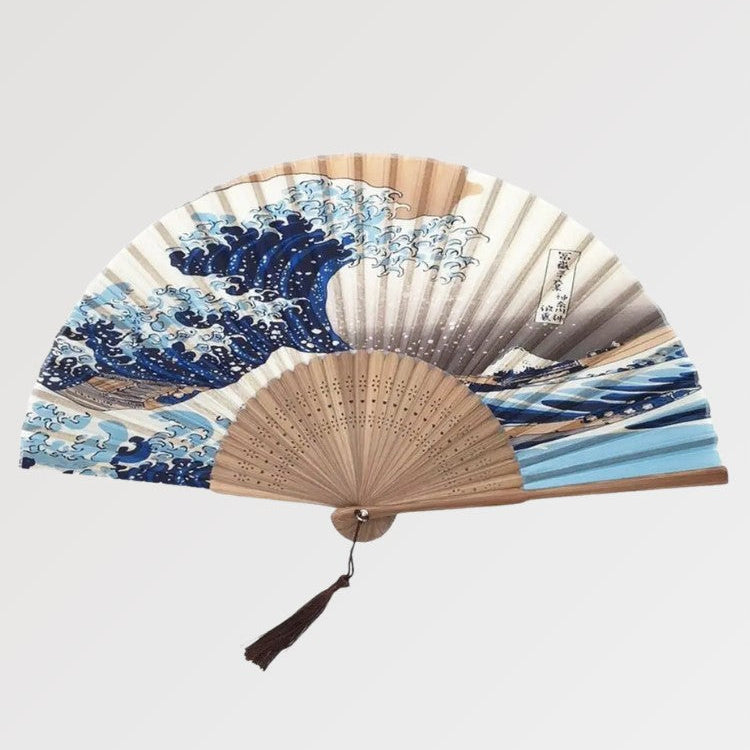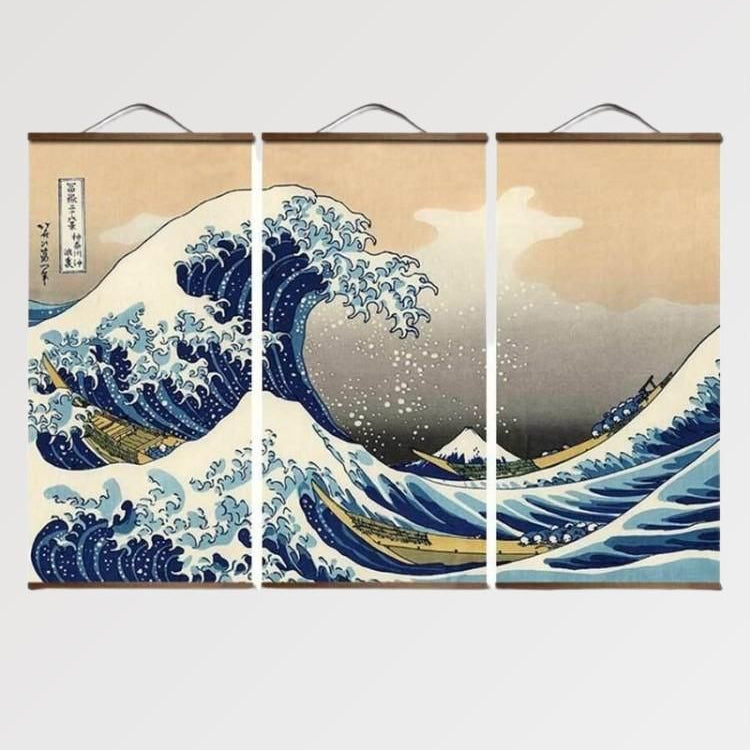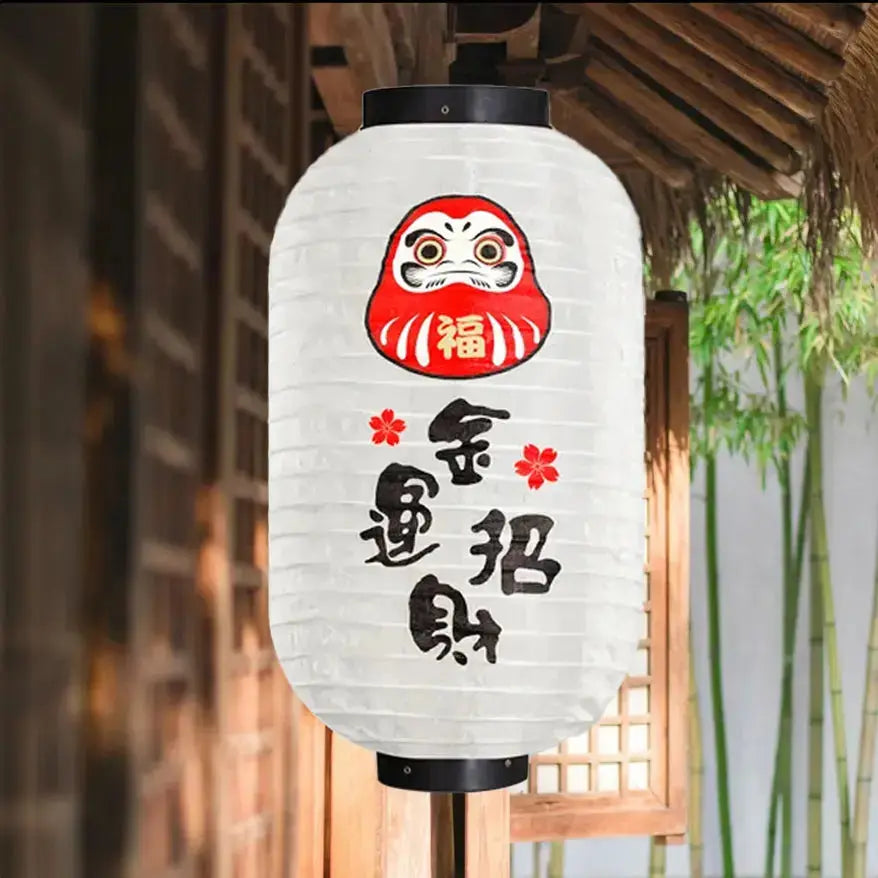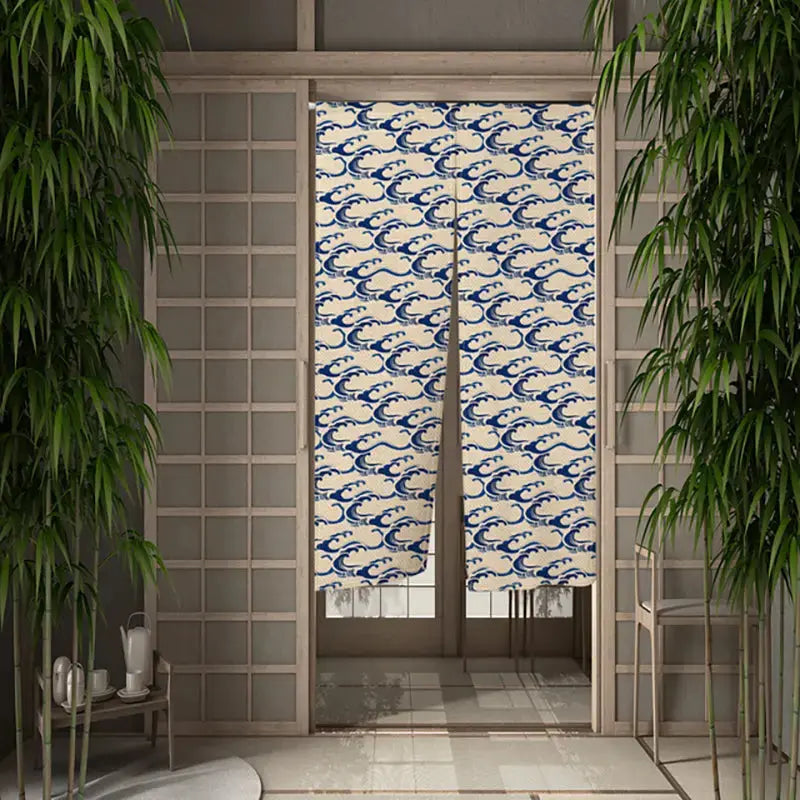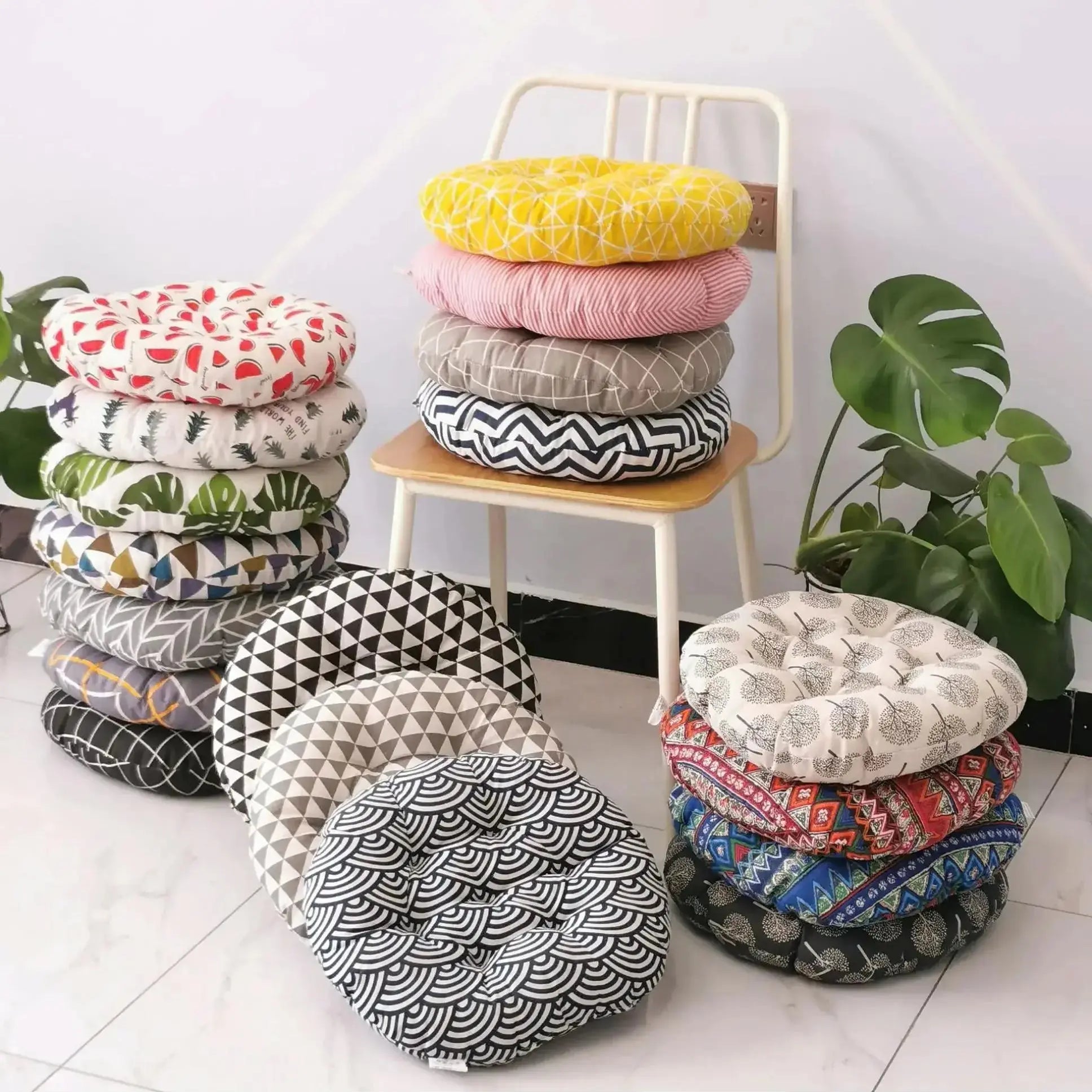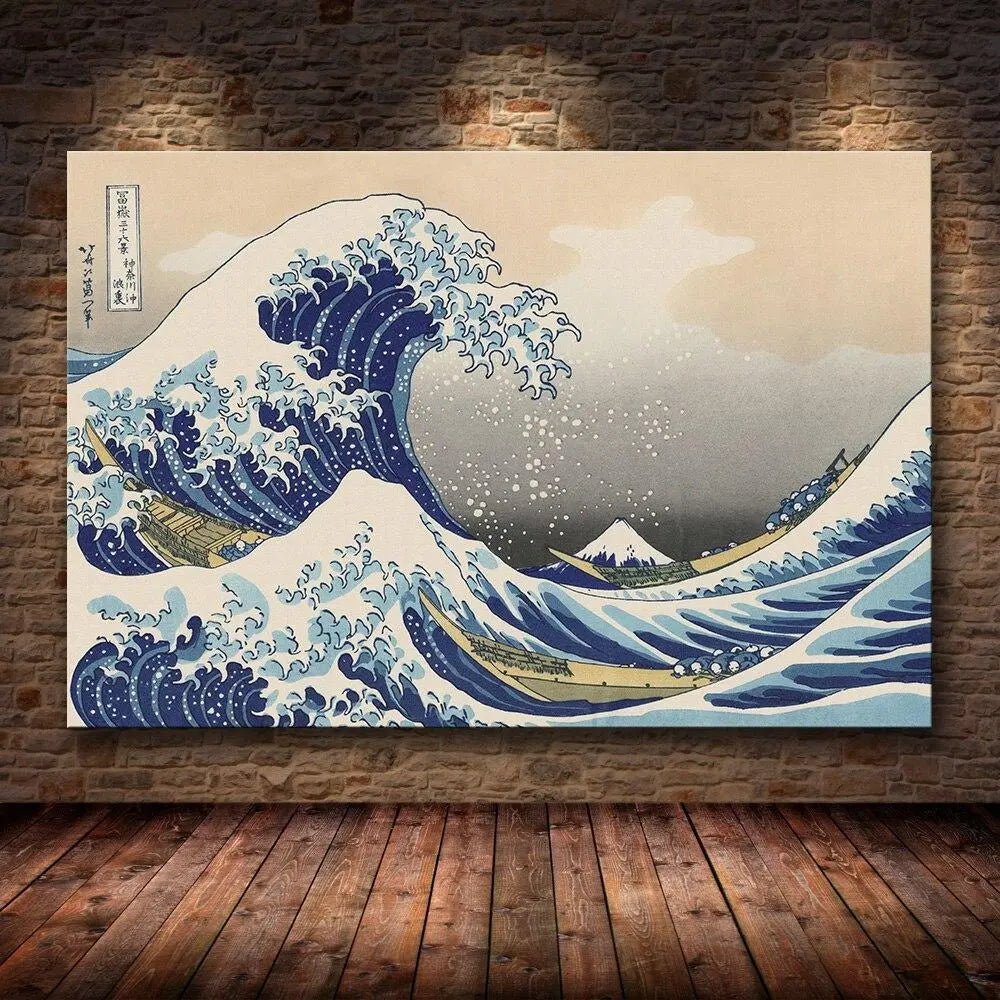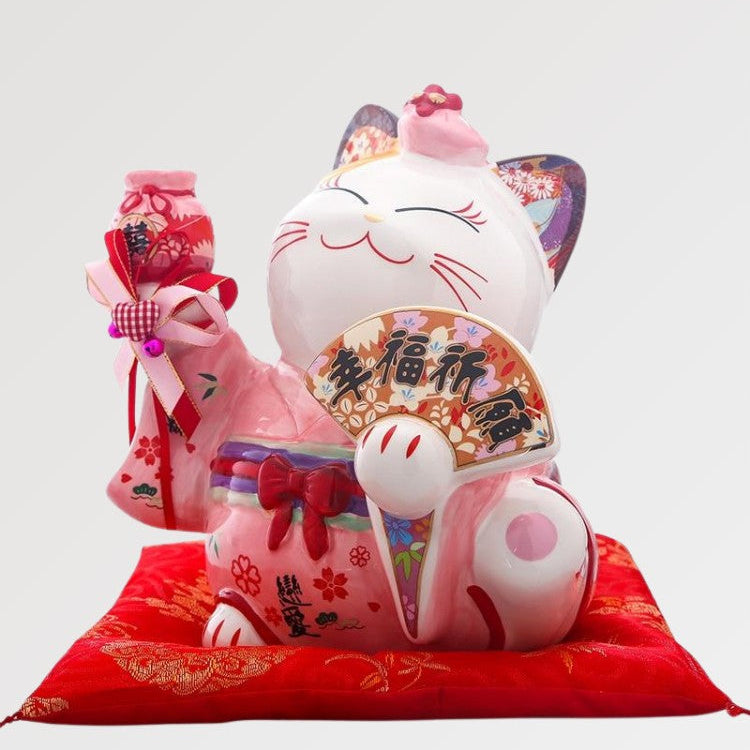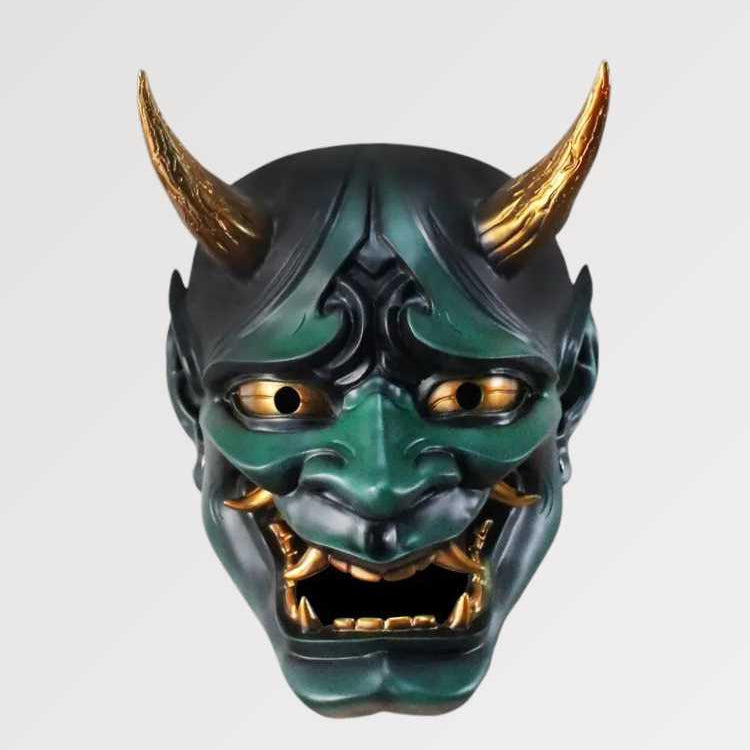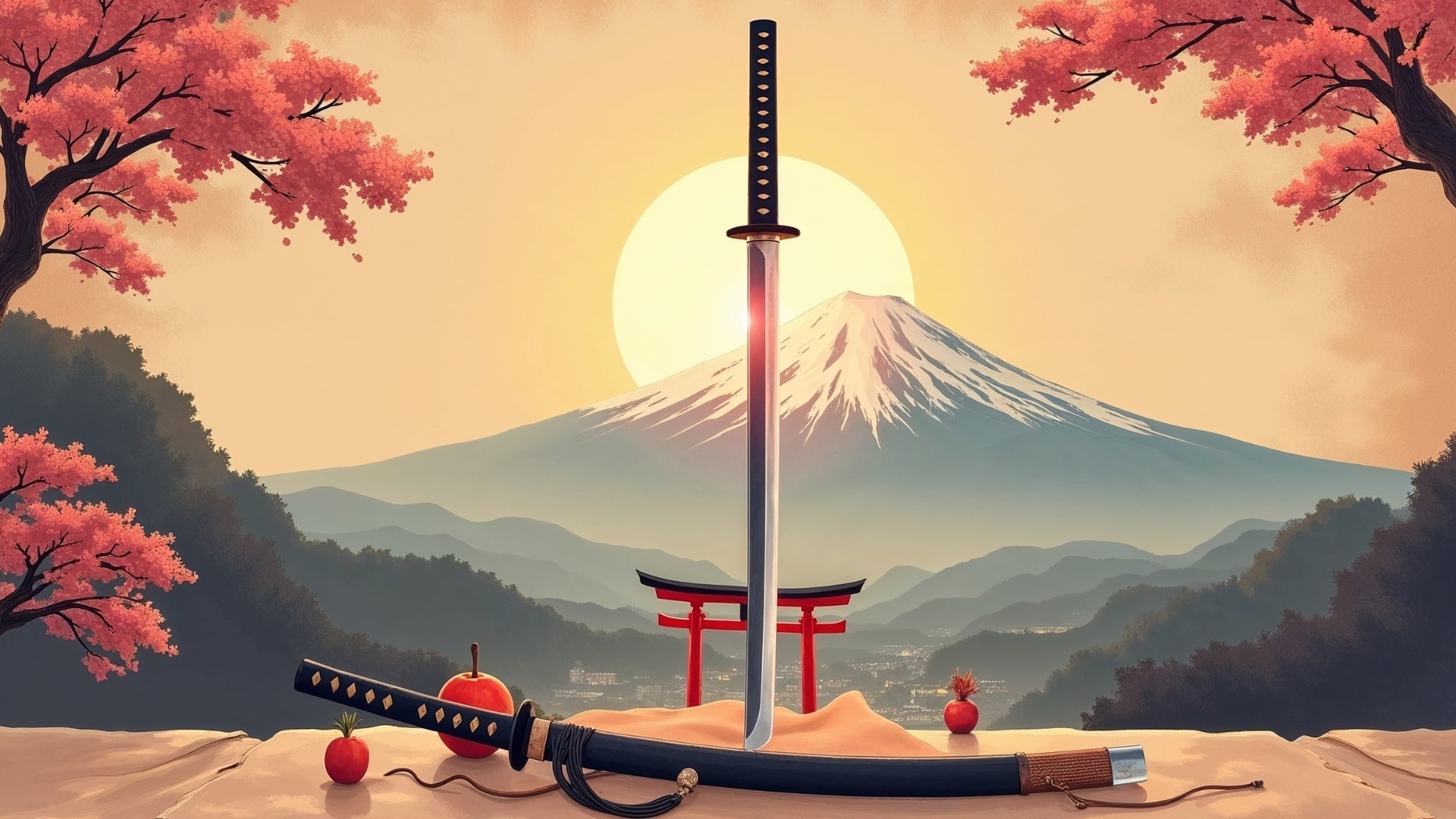Morning dawns on a field still covered in mist. A samurai slowly adjusts his kimono, folds back a sleeve, tightens his silk belt, and slips his sword into it.
This gesture, repeated a thousand times, is not just a dressing ritual—it is an act of centering. Before facing the outside world, he puts his inner world in order.
In feudal Japan, the samurai's kimono was not just a piece of clothing. It was moral armor, an extension of the warrior spirit and code of honor, the bushidō (武士道).
Every fold, every color, every fabric reflected hierarchy, restraint, and self-control. Beneath the austere silk lay the pride of a clan, the memory of a name, and the fragile balance between violence and serenity.
For while the sword embodied death, the kimono embodied a disciplined life: that of a man who lives with moderation, respect, and righteousness. Worn in battle, at ceremonies, or at home, it conveyed an ideal: beauty in simplicity, strength in calmness, prestige in modesty.
The origins: from utilitarian clothing to an expression of status
Long before becoming ceremonial attire, the kimono was a necessity. In rural areas and provinces at war, men wore garments woven from hemp or linen, crossed over the chest and held together with a simple cord.
Lightweight, flexible, and easy to wash, they met an immediate need: to move, work, and fight. But already, in this straight cut and crossover design, the beginnings of a garment that would become a national emblem were taking shape.
When the warrior class rose to power between the 9th and 13th centuries, Japan entered a new era. The samurai (侍) — literally “those who serve” — emerged as guardians of the great lords.
Their clothes, inspired by the kosode (小袖), differed from the sumptuous court garments of Kyoto: they were shorter, more fitted, designed for mobility and simplicity. They allowed the wearer to quickly don armor, ride a horse, and fight without hindrance.
At this time, clothing was already becoming a sign of belonging: warrior clans could be recognized by their colors, fabrics, and patterns.
The kamon (家紋) — the family emblem — was printed on the sleeves, chest, or back, affirming the unbreakable bond between the man and his lineage. This simple but powerful symbol survives to this day on ceremonial kimonos.
As wars became less frequent and samurai rose in the hierarchy, their attire evolved. It now had to express rank while respecting the modesty expected of a warrior.
The daimyō (大名), feudal lords, ordered kimonos made of fine silk, dyed in deep shades—indigo, gray, brown—reflecting gravity and self-control. Prestige was no longer found in brightness, but in the invisible quality of the fabric, the perfect cut, and measured gestures.
Samurai often wore a hitatare (直垂): a loose-fitting tunic with wide sleeves, fastened at the waist with a belt. Under armor, this lightweight garment facilitated movement. Outside the battlefield, it became court or ceremonial attire, symbolizing a balance between strength and elegance.
The kimono thus gradually took on a moral dimension: it no longer served merely to cover the body, but to express righteousness of spirit. The cleanliness of the fabric, the precision of the folds, the sobriety of the colors—all were signs of inner discipline.
The Muromachi and Momoyama periods: the alliance of war and aesthetics
Between the 14th and 16th centuries, Japan experienced a period of contrasts. Provinces clashed, alliances broke down, castles burned—but amid this turmoil, a new culture was born: that of the warrior aesthete.
The samurai was no longer defined solely by his sword, but also by his mastery of movement, taste, and presentation. The kimono became the visible sign of a disciplined inner life.
During the Muromachi and Momoyama periods, samurai perfected their attire. The kosode remained the basic garment: narrow sleeves, sturdy fabric, straight cut. But new garments appeared depending on the circumstances.
- The hitatare (直垂), loose and flowing, was worn during ceremonies or by high-ranking officers;
- The suikan (水干), lighter, was worn for training and travel.
Underneath the armor, these garments must breathe, protect, and above all, never hinder movement. Every piece of clothing, every belt, every knot is designed to strike a balance between efficiency and beauty.
A poorly fitted kimono or a sloppy obi is considered a moral failing: external disorder betrays internal disorder.
In castles, imported fabrics, deeper dyes, and gold or silver weaves began to appear. But even amid opulence, the warrior spirit remained the same: display nothing superfluous. Beauty lies not in ostentation, but in the precision of the gesture.
Great warlords such as Oda Nobunaga, Toyotomi Hideyoshi, and Tokugawa Ieyasu quickly understood the power of clothing as a political language. At audiences, banquets, and tea ceremonies, they wore sumptuous kimonos whose every detail—pattern, texture, color—affirmed their status.
Clothing thus became a tool of diplomacy and influence, just like the sword or the spoken word.
It was during this period that the culture of chanoyu (茶の湯), the tea ceremony, developed, closely linked to bushidō. Samurai learned sobriety, concentration, and the beauty of simple things. The kimono they wore for this ceremony reflected these values: matte fabrics, muted colors, straight lines.
Clothing became a visible manifestation of inner mastery, an art of minimalism where restraint was valued more than wealth.
This period also saw the rise of wabi-sabi (侘寂)—the aesthetic of imperfect simplicity. In an unstable world, samurai found refuge in the order and serenity of the kimono. War forged his body; clothing shaped his spirit.
Thus, at the turning point between war and peace, the samurai's kimono became a paradoxical emblem:
an outfit born of combat, but dedicated to beauty;
a martial garment that celebrated calm, restraint, and mastery.
The man of arms becomes a man of taste—and silk, in its own way, prolongs the sharpness of the sword.
The Edo period: codification, prestige, and refinement
With the establishment of the Tokugawa shogunate in 1603, Japan entered an era of lasting peace. Wars ceased, swords were sheathed, but the samurai class remained at the top of the hierarchy.
Deprived of battles, they became administrators, scholars, poets, and masters of ceremony—guardians of a social order based on discipline and virtue.
And in this peaceful society, the kimono also underwent a transformation: from combat clothing, it became a uniform of honor and prestige.
Bushidō (武士道), the “way of the warrior,” established the fundamental values of the samurai: loyalty, courage, respect, sincerity, and honor. But in a Japan without war, these principles were no longer expressed through the sword—they were reflected in everyday gestures, in the way of speaking, walking, and dressing.
The kimono thus became a mirror of the soul:
cleanliness of the fabric = purity of heart;
order of the folds = self-control;
sobriety of colors = humility of the pacified warrior.
One does not wear a kimono randomly. The cut, texture, color, and way of tying the obi reflect inner discipline. Those who respect their clothing honor their name—and, by extension, their clan.
Samurai learn to dress as one learns to meditate: slowly, consciously, without ostentation. Each gesture becomes a ritual, a means of uniting body and mind.
Thus, clothing ceases to be a simple adornment: it becomes a means of expressing bushidō.
Under the Tokugawa, everything was codified, from social rank to the nuances of permitted colors.
Samurai adopted a formal dress code that was both sober and codified: the montsuki kimono (紋付着物), often black, adorned with kamon (家紋) — the clan's coat of arms — on the chest, sleeves, and back.
Over this, they wore the haori (羽織), a short jacket, and the hakama (袴), a pleated skirt-trousers. The ensemble conveys an impression of righteousness, calm, and authority.
This garment becomes a kind of invisible uniform: all social distinctions can be read without the need for words. The material, cut, and even the inner lining reveal the wearer's rank.
For the refinement of the samurai is never ostentatious: beauty lies within. Beneath the dark and austere exterior, one often discovers sumptuous linings—embroidered landscapes, floral motifs, poetic calligraphy. A secret elegance, reserved for oneself.
The contrast is striking: in a world governed by order and restraint, the kimono becomes a silent expression of prestige. The samurai, now a statesman, poet, or calligrapher, embodies through his clothing the stability of the country and the continuity of values.
Over the generations, this codified attire became the norm in official portraits, ceremonies, and family rituals. It symbolized an ideal: that of a man in control of himself, loyal to his clan and his lineage.
But when the Meiji Restoration ended the power of the samurai in 1868, this garment suddenly became a witness to a vanished world.
Deprived of their privileges, some former warriors continued to wear their kimonos as a last act of moral resistance, refusing to abandon the symbol of their dignity.
Thus, at the twilight of the Edo period, the kimono no longer represented war or power—but honor, memory, and inner strength.
It is a garment worn as a silent oath: to remain dignified, even when everything else collapses.
The kimono in martial arts and the transmission of honor
The official disappearance of the samurai class at the end of the 19th century did not put an end to their legacy. The sword fell silent, but the spirit of bushidō (武士道) survived—in martial arts, in ceremonies, and even in the way a belt is tied.
The kimono, now a symbol of a glorious past, has become a vehicle for transmission: it no longer protects from steel, but from oblivion.
Modern martial arts—kendō (剣道), aikidō (合気道), judō (柔道), iaido (居合道)—are direct descendants of samurai clothing culture. Their attire is not insignificant: the keikogi (稽古着), kendogi, and hakama (袴) reflect the form and philosophy of the kimono.
Far from being simple uniforms, these garments extend the spirit of the warrior:
they remind us that the correctness of the gesture begins with the correctness of the wear.
The moment when one puts on one's kimono or keikogi is not a trivial act. It is a ritual of centering, a way of entering a state of total attention.
Tying the obi (帯) is a way of connecting with oneself. Adjusting it is a way of preparing the body for balance and the mind for precision. Even in a modern dojo, this gesture echoes centuries of silent discipline.
The fabric, the cut, the folds: everything obeys a logic of movement and respect. A poorly fitted kimono would betray not only a lack of rigor, but also a flaw in the spirit. This is why, in martial arts, clothing becomes a tool for inner education.
The samurai kimono, with its simplicity and noble bearing, still inspires Japanese culture today.
In Noh theater, kabuki, and even traditional weddings, it remains an expression of dignity and memory. Its influence also extends to cinema, where masters such as Akira Kurosawa have given this garment an almost mythical power. In Seven Samurai and Kagemusha, each kimono says something about the character: loyalty, pride, melancholy.
But more profoundly, the samurai kimono continues to convey an essential idea: that true elegance comes from respect and mastery. It is an elegance that does not seek to seduce, but to reflect an inner attitude.
In the gestures of martial arts masters, in the slowness of a bow, in the neatness of a fold, we find echoes of this ancient nobility: the art of standing tall, even in defeat.
Today, the kimono continues to inspire designers, actors, teachers, and tea masters. It is present in dojos, but also in contemporary Japanese fashion, respectfully revisited. The folds of the fabric, the simple cuts, and the crossed belts always evoke the same idea: that there has never been a boundary between clothing and spirit.
